Comments/Ratings for a Single Item
Maybe he saved Señora & Señor for next week.
I like these two 3D designs. You could do a similar one for the Señora.
You could have mentionned that these pieces behave as the opposite of the so-called Chinese pieces, xiangqi's Cannon (a.k.a. Pao), Vao and Leo.
The names Faro, Loco, Señora are smart. A semaphor (Faro) is a kind of tower (Rook is Torre/Tour in Spanish/French), Loco is the Spanish translation of Fou in French which is the name for the Bishop in chess, and obviously Señora, lady in English is related to Dama/Dame in Spanish/French, meaning lady in English and the name of the Queen in chess.
Good post.
And in case anyone's interested, I have the lineup figured out for Clue Chess. Some of these pictures need a bit of reworking, I'll admit, but in general this is what you'll see on the character cards:
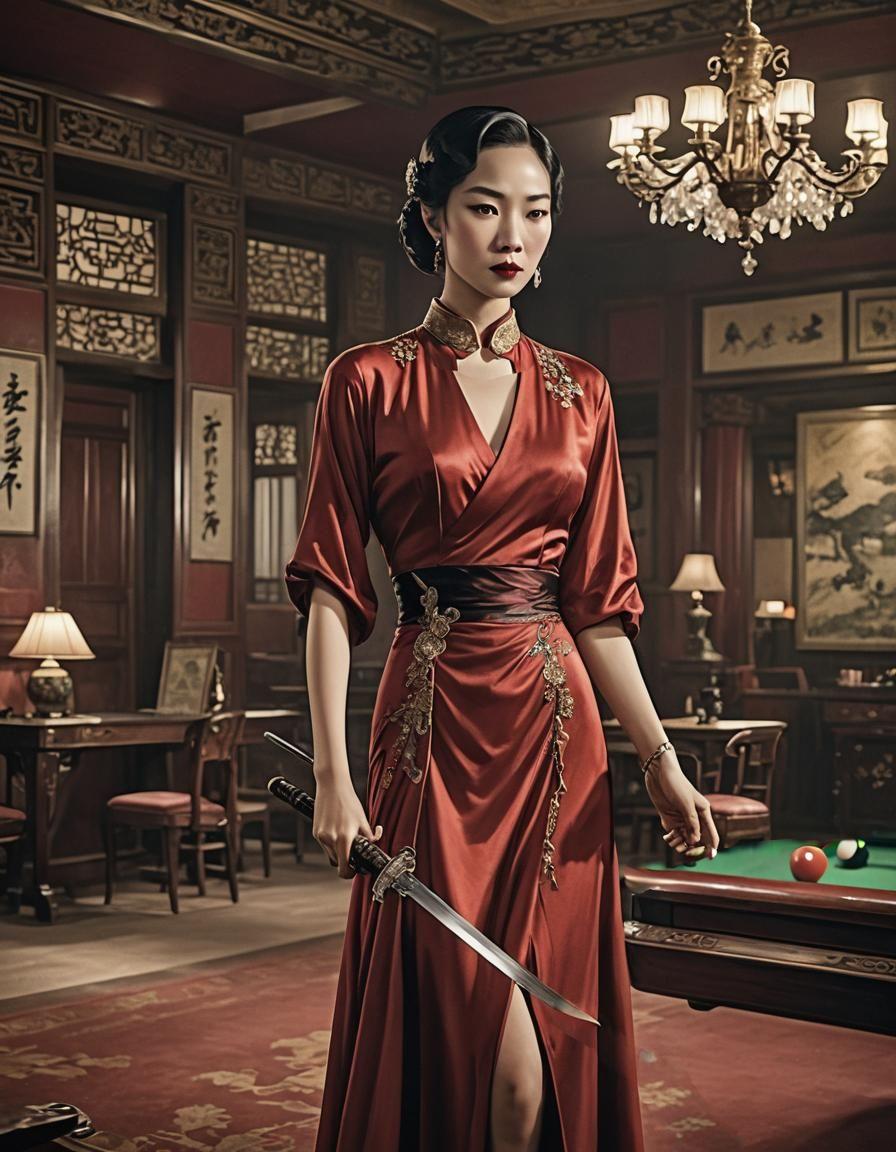


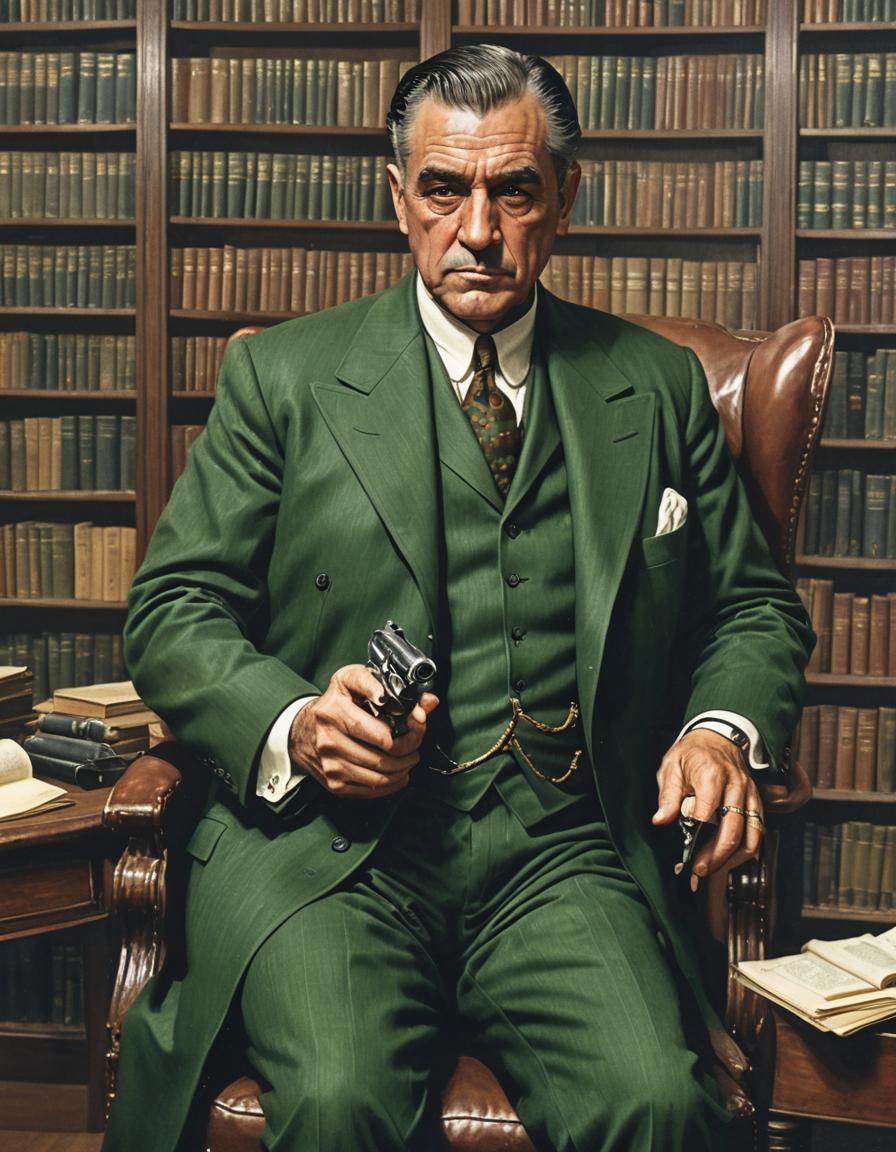
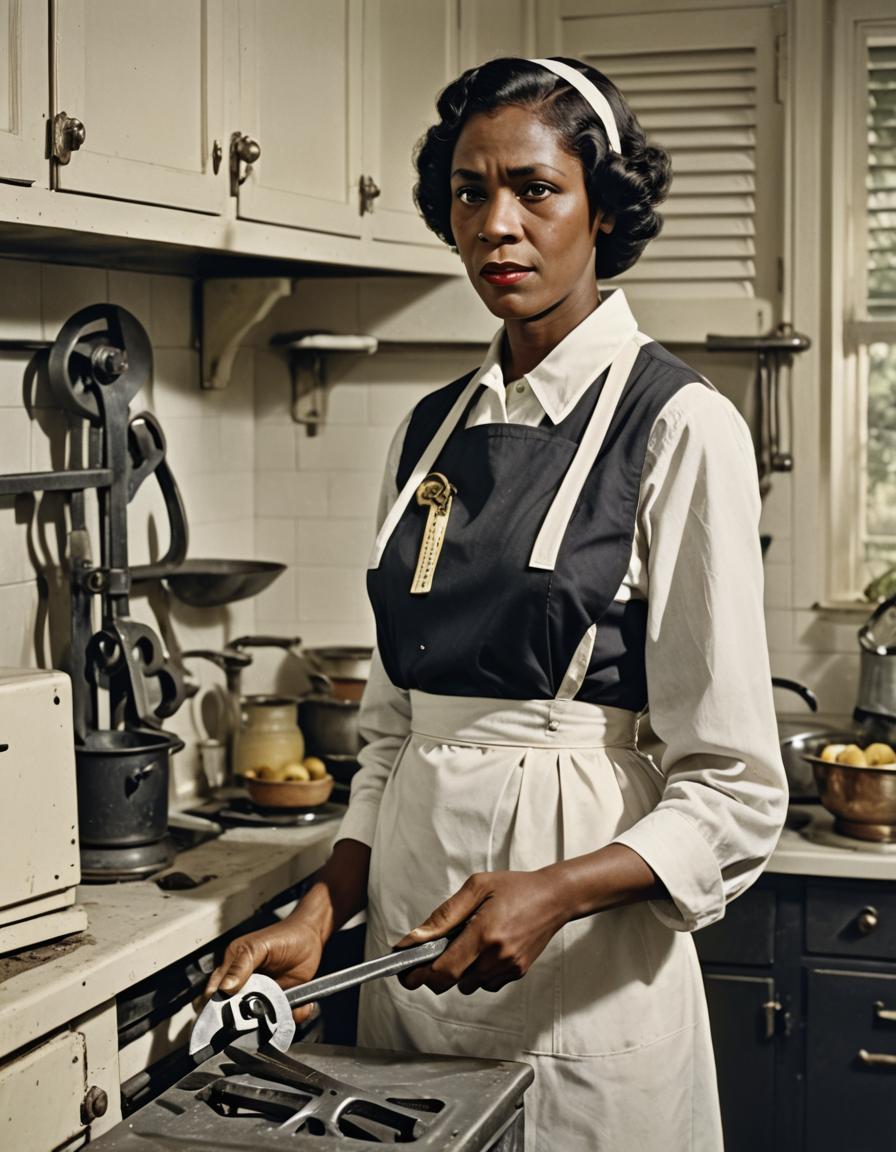



I acknowledge that it's hard to tell what weapon some of the characters are holding (or associated with in the picture) or what room they're in, so that'll need a bit of work. But this is a good start.
Tinkercad continues to have its upload problems, so it took until today to get the weekend's pair.
277. Faro. and 278. Loco. Also called the Argentinian Rook and Argentinian Bishop, these two pieces (along with the corresponding Knight and Queen -- Saltador and Señora, respectively) were invented in 2016 by Manfred Rittirsch for use in fairy chess problems; they've rarely been seen in an actual game until this year.
Argentinian pieces capture with a normal move, but must pass a hurdle in order to move without capturing. The distance before and after the hurdle can be anything, as long as the piece follow a straight line and jump exactly one hurdle.
As suggested by their alternate names, the Faro moves orthogonally (cRmpR), while the Loco moves diagonally (cBmpB).
The names, translated from Spanish, mean lighthouse and crazy person.
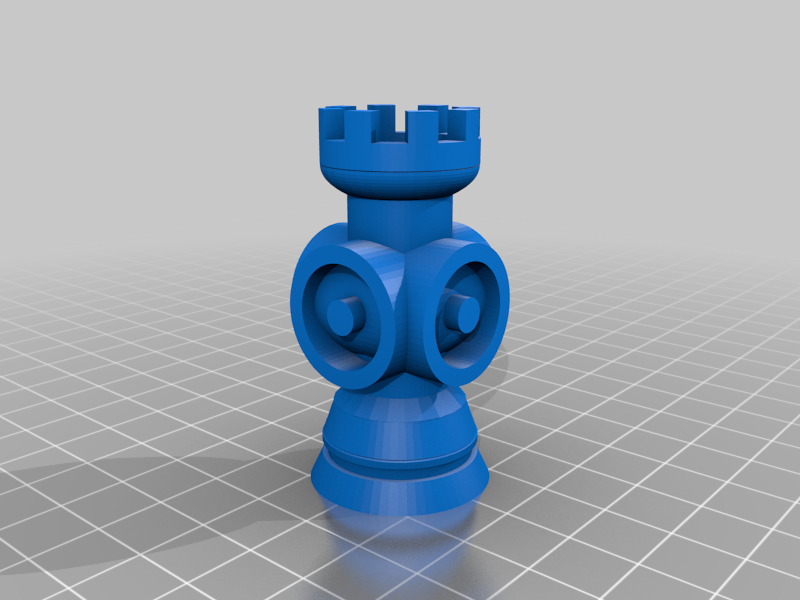
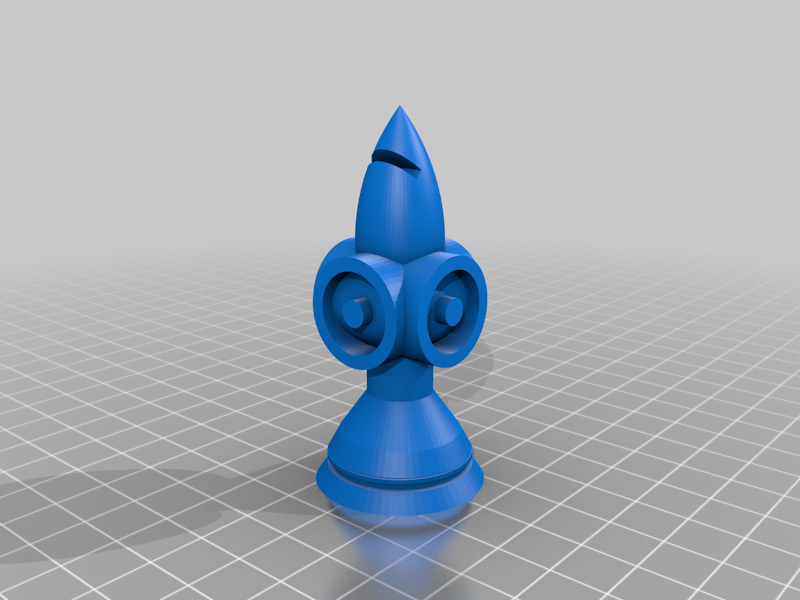
The added-on part of the dot inside a circle is intended to represent the Cockade of Argentina, one of the country's most recognizable national symbols.* My apologies to those in North America (and elsewhere) who associate that image with the Target department store chain.
(I'm thinking that maybe I should rework these pieces, with the circles a smaller diameter.)
The Señora, of course, compounds these two. (The Saltador moves like a normal Knight, but must have a piece in one of the two intervening spaces to move without capturing.) More Argentinian pieces could be extrapolated from all these, including Archbishop, Chancellor, Nightrider, and others.
*The most recognizable is the Sun of May, which consists of a sun with a face and 32 rays extended, alternating between straight and undulated, as seen in the center of the country's flag. While a beautiful and singular icon, it's a bit too complex for this context.
276. Grand Vizier. This is yet another intereseting piece from Robert Shimmin's game Scheherazade. It can step to any adjacent space, or leap (1,3) or (2,2). (KAC)

I rather like this piece for slightly-large boards such as the 12x12 one shown here.

This is yet another model that I made after studying historical pictures. I may need to accentuate the sash more, but on the whole I think it came out OK.
Since it's never appeared in any published version of Clue, no, I haven't.
For an eighth weapon, have you considered a blowgun?
If that's in reference to your Bullet, I've been thinking about that. Like today's Yey, it'd be an interesting Pawn or Superpawn type piece.
anybody reads this? can use it if u want… but I recommend to rename and put in another game
Extra information about Clue Chess that may or may not be relevant:
- The board is 25x25, with special spaces for the Rooms and blacked-out spaces around the players' starting areas (except in front).
- Similar to regular Clue(do), there can be anywhere from 2 to 8 players.
- There will be only one of each weapon; they start neutral, in starting places on the board.
- When a player captures a weapon piece, that player's King gains the abiltiies of that piece.
- There will be no limit on how many weapons the King can carry (as of this moment, anyway).
- I haven't fully decided yet what happens to the weapons when the King is captured. The King itself is returned to its starting square, and I'm inclined to do the same with the weapons, though I may decide on something else.
- It may or may not be allowed to move the weapons as independent, "neutral" pieces. If it is, it'll be move-without-capture only.
Feedback on these rules wouldn't be entirely unwelcome, though for now I want to focus on selecting the eighth weapon.
And now, a question that's been nagging on me for a while: Which should be the eighth (and final) weapon piece in my Clue Chess game?
So far I have seven weapons selected: the six from the classic game, and one that's appeared in the most variant versions:
- Candlestick (mK2cafmK)
- Dagger (mK2mafcabK)
- Lead Pipe (KcabK)
- Poison (mnNcW)
- Revolver (mWcaibCcaibZ)
- Rope (KcaibaK)
- Wrench (nNcafsmK)
(A secondary question: do these seven all seem reasonably close in power? I'll provide some extra information in a separate reply, in case it's needed.)
The candidates for the eight weapon are:
- Axe (WcN)
- Baseball Bat (m(afal)3Fn(aln)3AmWcabNXXcabAXY)
- Dumbbell (mW[dD-bucW][cD-ubcW])
- Horseshoe (nN[nN-fcaibW][nN-lcaibW])
- Trophy (KS)
I'm still rather unsure about how well I've done the Dumbbell's move, so right now it's my least favorite. I am, in fact, leaning most toward the Axe at this point, though I'll gladly take other ideas.
While I mostly want to rely on game balance (keeping the eight weapon pieces close to equal in power level), other considerations can include appearances in variants, ease of understanding, overlaps with other weapon pieces, general aesthetics, or anything else you like.
275. Yey. This is another piece that I built based on a letter of the Tifinagh, and it's one that I'm a little surprised I haven't alraedy posted.
Based on the Berber letter ⴻ, Yey moves one space sideways, or leaps two spaces vertically. If the latter move captures a piece, it may then move without capture from there to any adjacent space. (sW[vD?a(b)K])

I think that this would be an interesting piece to use as a special Pawn, promoted Pawn, or "superpawn."
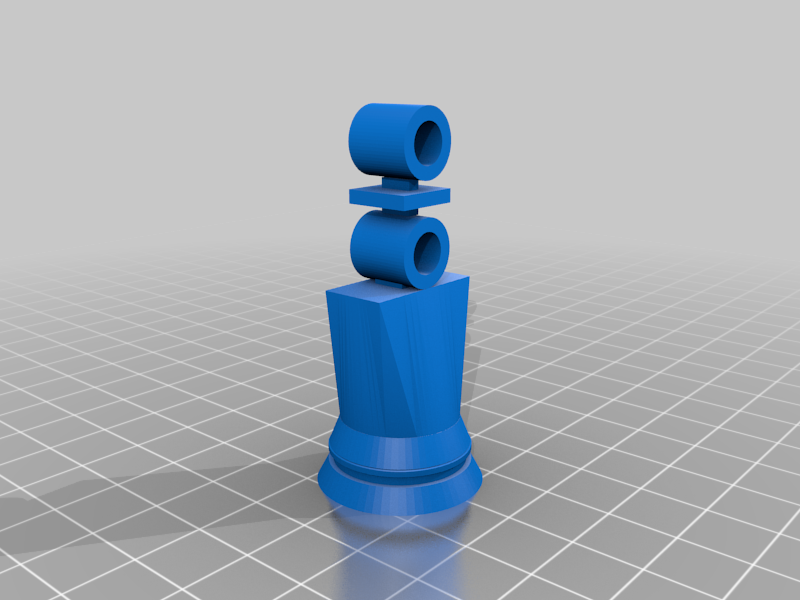
I'd call them Berlin Peon/Anti-Peon & Berlin Storz Pawn/Anti-Storz Pawn. Right Anti-Pawn & Left Anti-Pawn would be rmFrcW & lmFlcW.
I recently have broken my table and then sorted things from it. There were many CV drafts and thoughts, and among them I found pieces based on different time controls of standard chess, but pieces weren’t usual at all. One of them is Bullet, but I can call it Storm Trooper. It moves straight up to 4 forward, 1 backward (both are with or without taking), and also 1 sideways without taking, but there it can push one piece (if square isn’t free) in this direction: same logic as my Shieldholder from NDPRC and Horizons.
Given that the practice of "Left" and "Right" has a history in Shogi -- where simply "Left" and "Right" are used in all English translations of which I'm aware* -- I think I'll leave that much as it is.
On the same principle, since those names refer to position, I do think it'd be better to switch the two as far as their moves.
*Allowing that I've been at this for a relatively short time.
Given that I usually call for "left" and "right" to be for placement, it may be better to reverse these moves. Opinions on that question are welcome.
My opinion is, don't leave it ambiguous! Even if you use it consistently it will be confusing. If the name refers to the location make it something like "Left Side Berolina Pawn" and if it refers to direction make it "Leftwards Berolina Pawn".
273. Left Berolina Pawn, and 274. Right Berolina Pawn. I had a kind of weird day yesterday; among other things, I hadn't selected a Piece of the Day for today, and as I was hunting around the best I could find was a two-piece pair. Since it was late in the day, I decided to just wait for morning and do them together.
While I was compiling the Icon Clearinghouse, I came across images for these two pieces, but without any clue as to how they were supposed to move. So, I made my guess: I simply turned the standard Berolina's movement 45 degrees.
That gives the Left Berolina Pawn a non-capturing move of 1 space orthogonally forward or to the right, with an optional 2-space move as an opening, and a capturing move of one space diagonally forward and to the right. (mfrWcfrFimfrnD)

And of course the Right Berolina Pawn does the same thing to the left. (mflWcflFimflnD)

As usual with such pieces, "left" and "right" refer to where the pieces should be placed in the lineup, not the direction in which they move.*
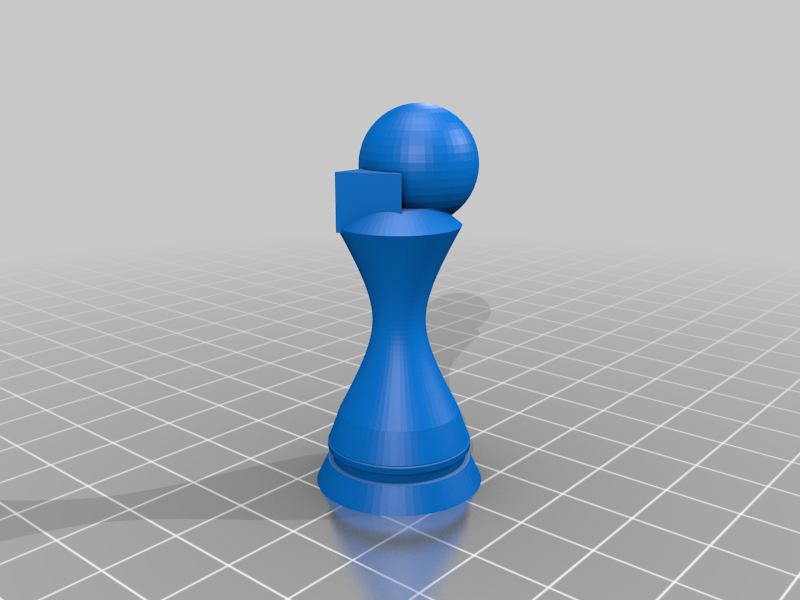
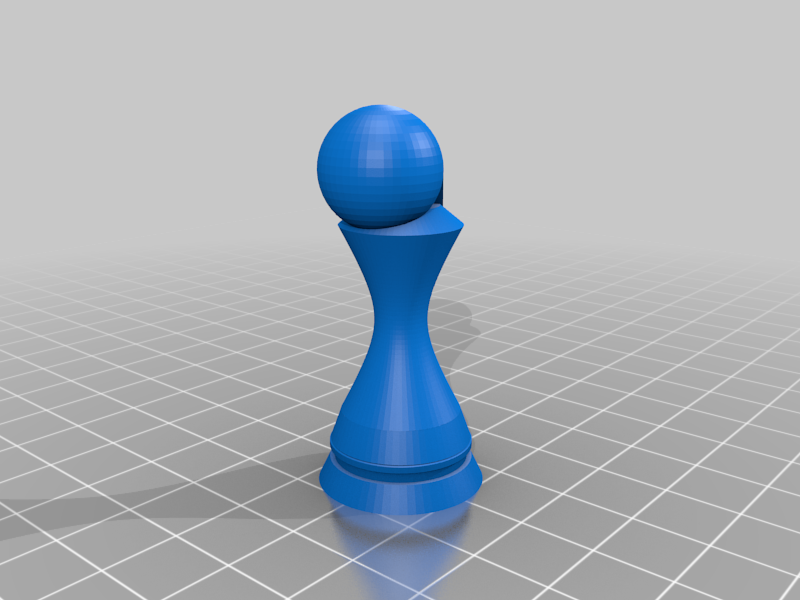
The models are just modified Berolina Pawns, with the head not represented by the name (right on the Left Berolina, and vice versa) replaced by a triangular block pointing forward.
*I'd originally done that the other way around, leading to the discussion in the next couple of replies.
Actually, according to the article on the Dalai Lama:
The name "Dalai Lama" is a combination of the Mongolic word dalai meaning "ocean" or "great" (coming from Mongolian title Dalaiyin qan or Dalaiin khan, translated as Gyatso or rgya-mtsho in Tibetan) and the Tibetan word བླ་མ་ (bla-ma) meaning "master, guru".
The Buddhist Lama and the Assyrian Lama just happen to be two words from different languages that happen to sound the same, no more related to each other than either is to the animal classification of llama.
Thanks. Now we know where the word Dalai Lama comes from.
272. Lamassu. This being from Assyrian legend (also called a shedu) was mentioned in conversation a few days ago, and I immediately (one might even say reflexively) started thinking about how such a piece could be represented on the board.
A lamassu is described as "having a human head, the body of a bull or a lion, and bird wings." The bull seems to dominate the overall description,* and also seems much easier to iimplement in this context, so I went with that; but a bull what? Bison or Buffalo seem obvious, but Aurochs is also possible.
What bird piece to use is also subject to a choice. The most familiar bird-based pieces are Raven, Hawk, and Eagle; of these, the Raven is in between the other two and seems the most reasonable. Plus, the Nightrider-based part of its move covers the Bison/Buffalo dillemma, so it helps with that decision.
Adding the Man (for the human head), we get a piece that slides orthogonally like a Rook; steps one space diagonally; leaps (1,3) or (2,3) like a Camel or Zebra; or makes one or more (1,2) Knight leaps in a straight line. (RFCZNN)

(I missed including c12 as part of the Nightrider move; sorry about that.)
This only occurred to me just now, but I think it might also be interesting to see how things would fall if I'd chosen to go with the Aurochs and Hawk.

Making the piece was a more of a challenge than it looks. There's no indication of lamassu having a bull's horns, but how else to indicate the bull part of the construct in an upright piece? If nothing else, this necessary bit of artistic license should make the piece distinctive on the board.
*That's my general sense when reading about it, anyway. I could be wrong.
Brain glitch -- I've no idea why I put R and B instead of W and F. As for nHH, I just didn't think of it... I'll go fix those in just a wee bit.
Thanks for the catch!
 H. G. Muller wrote on Sat, Apr 13 04:57 AM UTC:
H. G. Muller wrote on Sat, Apr 13 04:57 AM UTC:W and F instead of R and B. And afaf(afafaf)W can be written as nHH, a non-jumping Threerider. [W?nHH] for the other move does not work yet. (It ignores the n.) Eventually it should be possible to write this as [W(?nD?W)].
269. Limping Bishop, 270. Limping Rook, and 271. Limping Queen. This was not what I'd planned for today, but Thingiverse is having some technical issues with adding new parts, so I'm going with these.
After seeing many variations on sliders -- ski, skip, slip, spotted, and so on -- I've seen skips of one or two spaces, either one-time or repeated; and I thought, what if a piece had to move three spaces at a time? Well, it wouldn't be much use, I decided; but two out of three seemed viable.
These "Limping" pieces can only move a number of spaces that's either a multiple of 3, or 1 greater than a multiple; in other words, 1, 3, 4, 6, 7, 9, 10, and so forth. The Limping Bishop, therefore, is afaf(afafaf)FnGG, while the Limping Rook is afaf(afafaf)WnHH.*
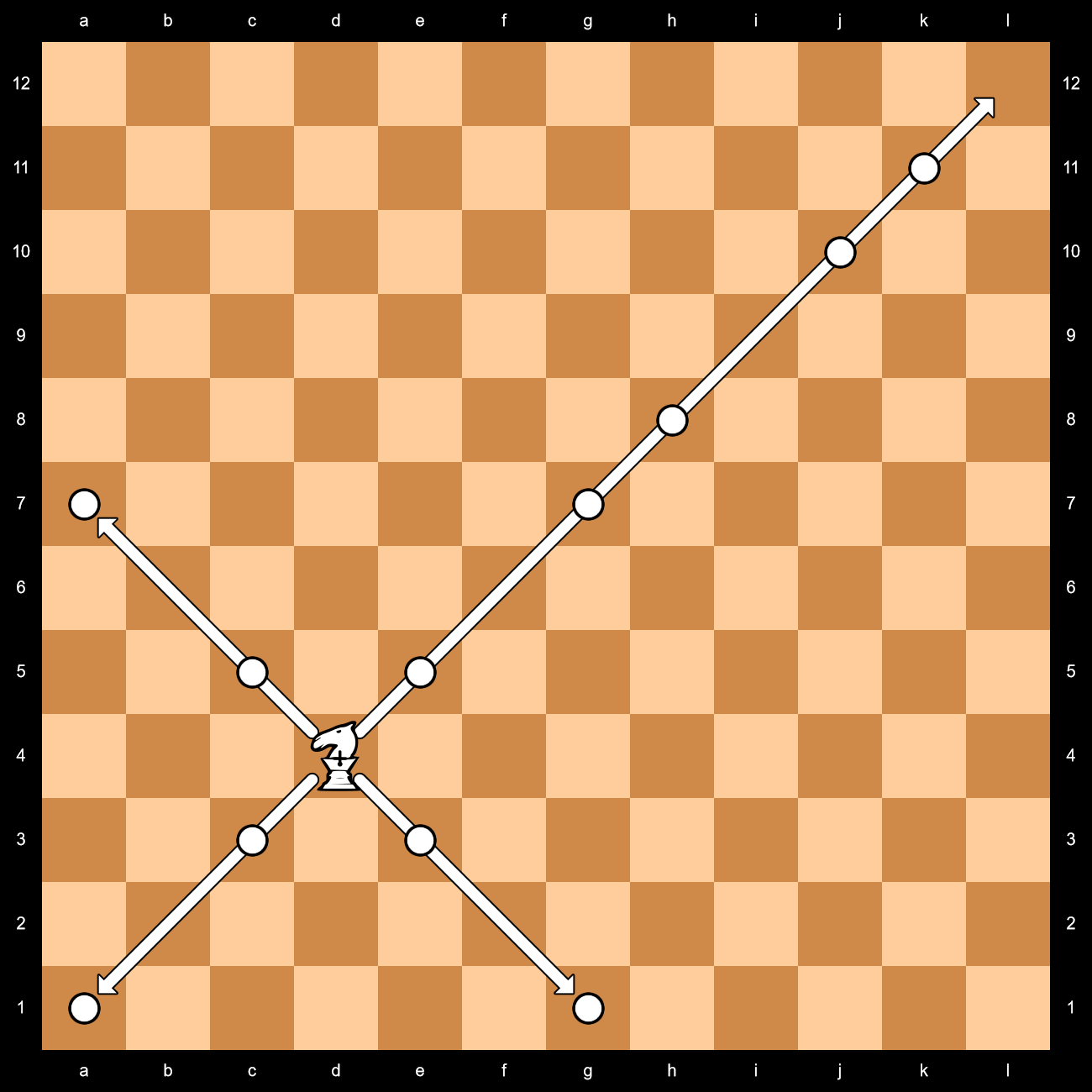

In a way, it resembles a skipping step, and I'd call these "Skipping" pieces if that wasn't already taken.
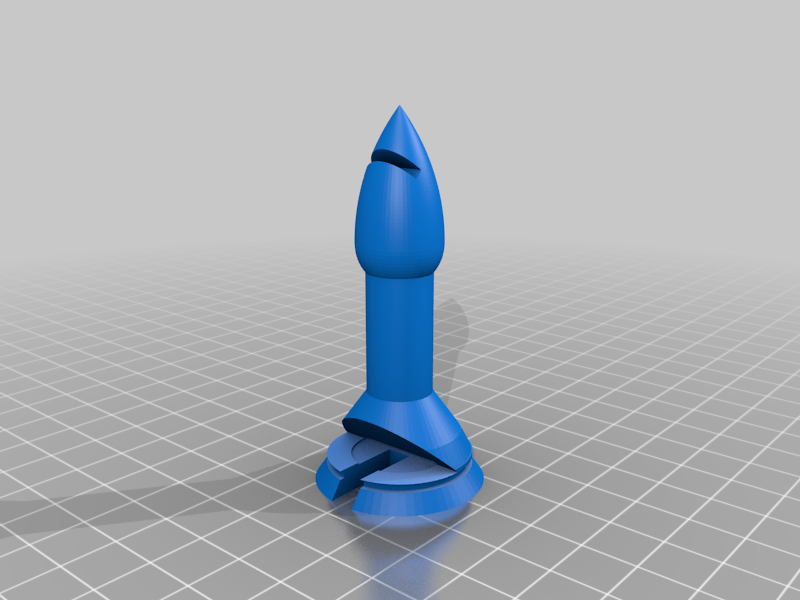
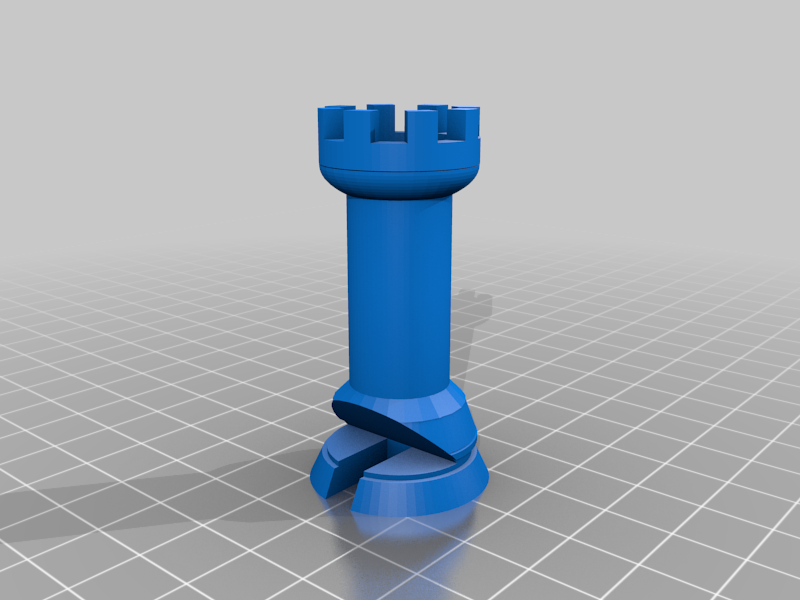
And, obviously, the Limping Queen combines the two moves. (afaf(afafaf)KnSS)
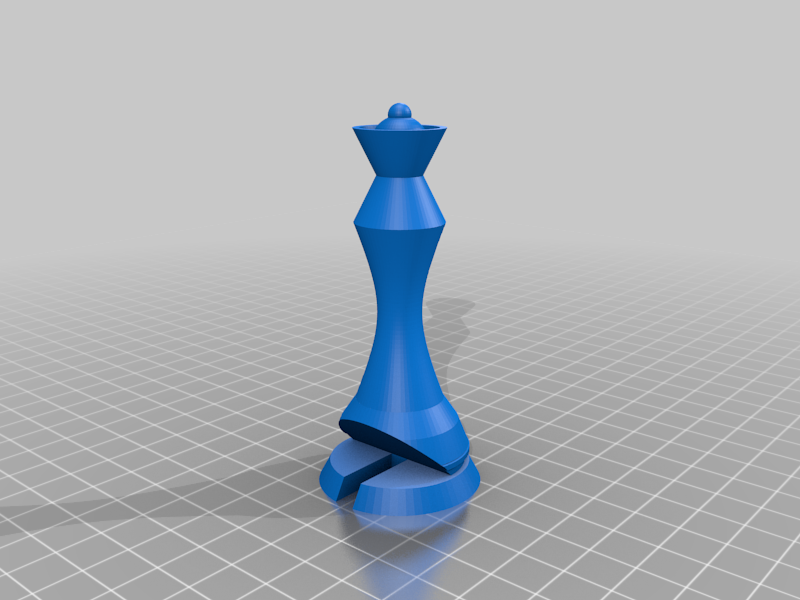
These models are the first time I've sliced open the bases of my pieces, and (from the looks of that Bishop) I think I may need to check them and fill them in.
And of course there are two other possibilities for which step out of three to skip over; they just need good names!
*As H. G. Muller points out in a reply to this, the logical way to write these would be [F?nGG]nGG and [W?nHH]nHH, but as of this moment bracket notation doesn't handle certain things -- such as those combinations -- correctly. (Yet.)
25 comments displayed
Permalink to the exact comments currently displayed.
I actually do have the Señora (and Saltador) on my Thingiverse page (though I didn't think to do the Señor; thanks for reminding me about that link, HaruNY!). I'll probably post them all separately at some later date, as a follow-up.
As to the contrast with Chinese pieces, I would have done that but I couldn't remember which pieces the Argentinian ones contrasted with.
PS: I like my interpretation of Loco better. But then again, I would. :þ :)